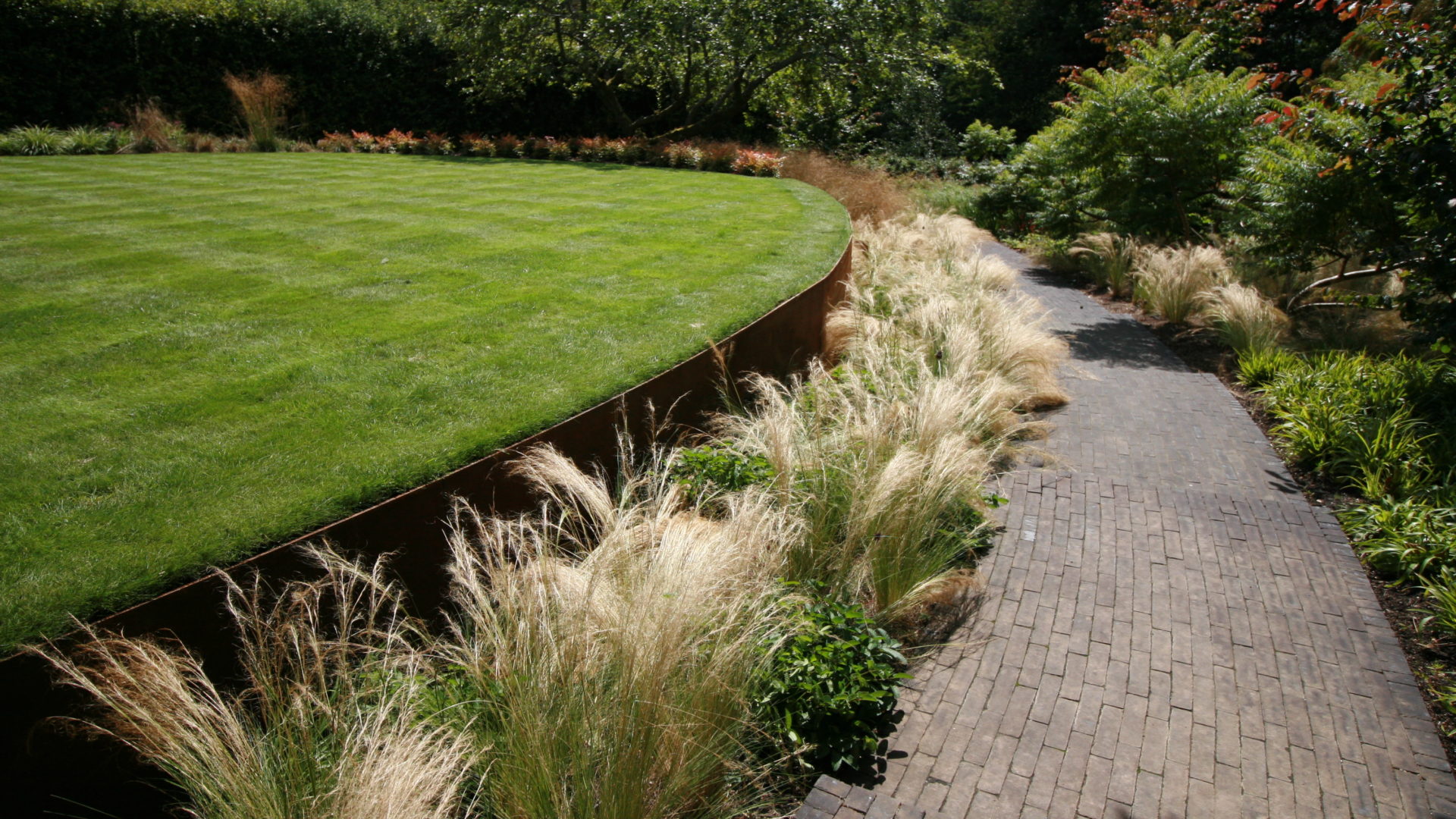
How different would life be if we didn’t have right-angles? Although symmetry is everywhere, squares and rectangles occur rarely in nature. Look out of your window into the garden: apart from man-made objects, how many right-angles can you see? I would bet none. So why is it everything from a book to a brick is rectangular in form? With buildings, it is partly because of the ease of stacking, particularly with modular materials such as bricks. And then there is the fact that most wood comes in straight(ish) lengths. If you look at societies where buildings are constructed on site from local materials, they are often not rectangular, particularly in areas where wood is not abundant (think of adobe buildings, or igloos come to that!).
The right angle also has a strangle-grip on garden design. This started with the ruler and drawing board and has been made worse by the computer. I for one am etting mightily sick of yet another sharp modernist garden laid out upon a neat grid. Why do we do this? Is it our way of imposing order on the world, of our need to say we are not part of nature? Indeed, it’s hard to avoid shape-making in garden design. I can remember when I started out in this in the 1980’s, it was all circles. Tim Waterman put this very well in an article a few years ago: “Begin with a circle (or a hexagon, or even an irregular polygon), click and place it around in CAD a bit, and presto, a garden design that functions only in plan and which stylistically evokes the golden year of 1985.”
SketchUp has done little to help this. The ease with which one can pull and push faces and shapes means that if we are not careful, most of our schemes end up looking the same. Don’t get me wrong, I love SketchUp as much as the next person – it is an incredibly powerful 3D modelling tool. It’s just that it does tend to gravitate towards more rectangles (usually in white render).
The late, great architect Will Alsop used to start his design process by doing an abstract painting to limber up his mental design muscles. Personally, I favour starting with a pencil or a felt pen and a piece of white paper. There is something about the freeness of hand eye coordination – the sweep of a pencil on paper. Even the noise is satisfying (although the squeak of a felt pen is better still!).
I like designers that have the courage to eschew shape-making in general and rectangular design in particular. This is relatively easy on larger plots; in smaller gardens it is more difficult. There is the wish to detract from the all to obvious boundaries and the attraction of clear shapes is magnetic. They also get you noticed – they are ‘strong’ design; although of course that doesn’t necessarily mean they are good design. But even here there are opportunities for a more unbounded approach, for letting the planting do more of the talking.
Next time you are confronted by an empty plot, try just for once to do a design that doesn’t rely on rectangles for its design structure. Or, if you want to – do one, and put it to one side. Then pick up a felt pen or a pencil and let your hand do the work. You might just surprise yourself. Freed from the shackles of the rectangular grid, your ideas may simply flow through to your hand.
Now, I’m off to do an abstract painting.
[This piece was originally published as an article in the Garden Design Journal in October 2019 as part of the ‘Just Saying’ series]